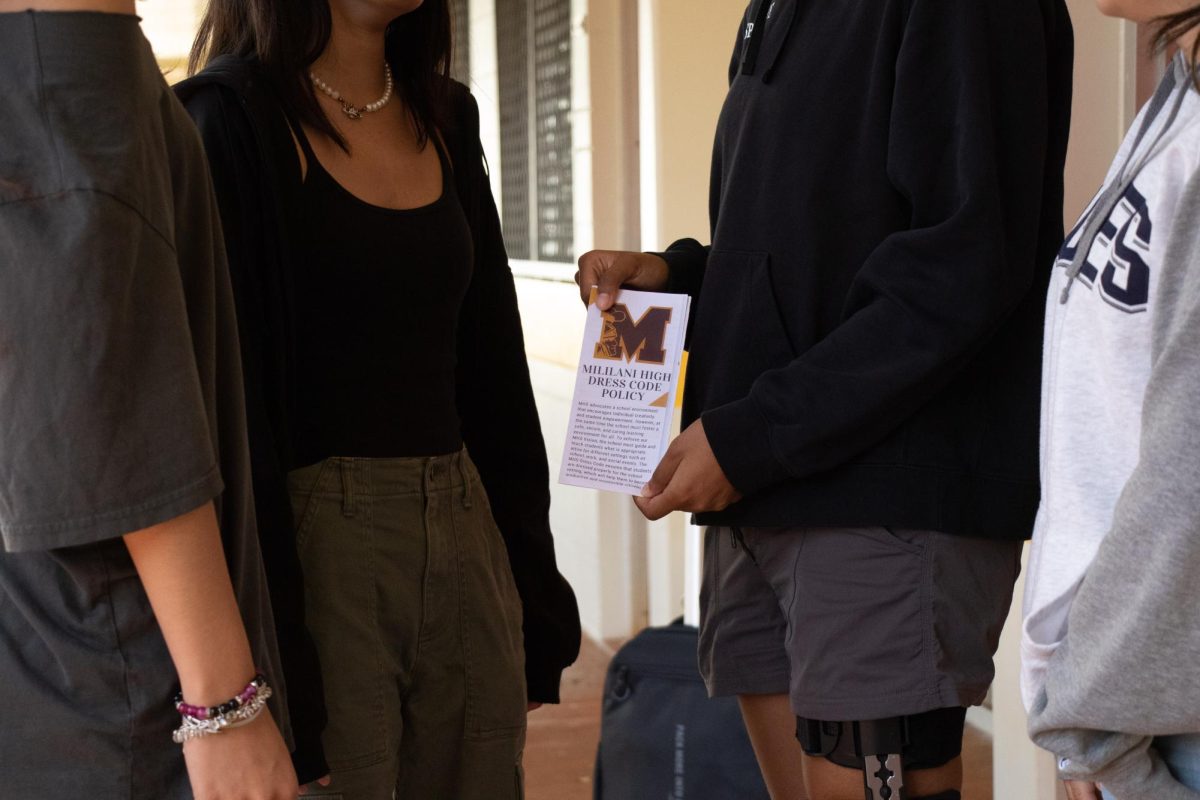Texting While Driving
March 14, 2019
Distracted driving, defined as operating a motor vehicle while doing another activity that diverts your attention, is a common occurrence in today’s society. It includes activities such as eating, drinking, conversing with other passengers, texting and many more. Texting while driving is especially hazardous, as you completely take your eyes off the road for an average of five seconds to respond to or look at an incoming text.
“Texting and driving is extremely dangerous because you’re distracted. Your eyes are taken off the road. When you’re driving the scenes change so fast because you’re driving quite fast. If you’re not paying attention to the surroundings, then you could cause a major accident,” said Junior Leila Redoble.
Equally or even more dangerous than driving under the influence, texting is one of the most prominent forms of distractions for drivers. A person is four times more likely to get in an accident if they text behind the wheel, and in 2017, 8.5 percent of all car accident fatalities were reported as a result of distracted driving. “I do believe it will be a problem as long as texting is the normal way to communicate. Why? Because people feel they are in control and can handle it. The not me mentality,” said Police Officer Jacque Fukunaga-Kaneshiro.
Distracted driving falls into three main categories: visual, or taking your eyes off of the road, manual, taking your hands off of the wheel, and cognitive, which is taking your mind off of the action of driving. Texting encompasses all three of these categories as you look away from the road, formulate a response and finally use your hands to send the text. “If you’re looking at the screen, you’re not looking at the road so therefore (there’s a) higher risk (of an accident),” said former Driver’s Education teacher David Francisco.
While teenagers are often first to be suspected as the majority of those who text while driving due to their phone-attached lifestyle, this may not necessarily be the case. In an anonymous survey of 318 MHS students, 67.9percent of students claim to see a mixture of both adults and teenagers texting while driving, 16 percent of students claim to see mainly adults, 11.3 percent say that they don’t often see texting behind the wheel and only 4.7 percent of students claim to see primarily teenagers. “I think that people in general text quite a bit,” said Francisco. Redoble added, “With parents I do think it’s mostly (to do with) work. With kids I think it’s just something to do because it makes them feel cool, like they can multitask while driving.”
Some drivers may use the excuse that they text while stopped; perhaps at stoplights or in slow-moving traffic. While many do this because they feel it is less dangerous since the car is not in motion, texting while at a stoplight still has its risks. “I believe that texting at stoplights or in heavy traffic is still dangerous because you are not aware of other drivers. Other drivers could be driving right in your direction and you would be unaware and you wouldn’t be able to avoid them,” said Fukunaga-Kaneshiro.
While people are often aware of the dangers of distracted driving and the popular message of “it can wait,” many just can’t kick the habit. Out of the 221 students in the survey who are student drivers, 95 of them admit to having texted while driving. “In today’s society, we tend to look on our phones every second. We need to know every bit of information. Without looking at it, we feel we are missing out. We are too attached to our phones,” said Junior Darcie Tanaka.
Although most states, including Hawai’i, have passed laws regulating cell phone usage while driving, a fail-safe solution to eliminating it is likely unobtainable. However, education and enforcement of laws are two main strategies that can be utilized to decrease this problem. “I have four kids, my oldest is 17, I’ve spoken to him on numerous occasions however, I’m not with him 24/7 and he will have to make these decisions himself and face whatever happens and their consequences, ie; car being taken away or arrested for negligent homicide,” said Fukunaga-Kaneshiro. Francisco added, “I think the only way that a person or individual will stop, or not stop, but will most likely lessen their texting is if something actually happened to them that would make them want to change their ways. I think the actual fear of something that has happened that affected them.”
While there are rare instances where texting and driving may be necessary, such as a police officer needing to communicate while at work, that text that you are about to read or send behind the wheel is not worth losing your life or taking someone else’s.
INFOGRAPHIC:
https://mililanitimes.com/2030/features/texting-while-driving-infographic/
STUDENT SURVEY:
https://mililanitimes.com/1926/features/texting-and-driving-student-survey/
EDITORIAL:
https://mililanitimes.com/1860/editorial-commentaries/texting-while-driving-what-message-is-worth-dying-for/



